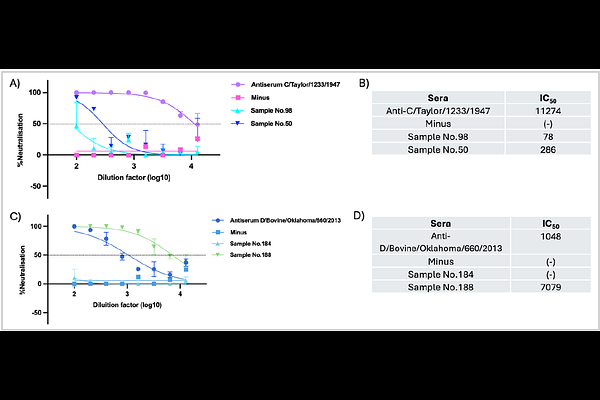Development and optimisation of Influenza C and Influenza D pseudotyped viruses

Development and optimisation of Influenza C and Influenza D pseudotyped viruses
Marotta, M. G.; Neto, M. M.; Daly, J. M.; Maina, M.; van Diemen, P.; Everett, H.; Lucente, M. S.; Camero, M.; Montomoli, E.; Trombetta, C. M.; da Costa, K.; Temperton, N.
AbstractTo facilitate the study of influenza C (ICV) and influenza D (IDV) viruses, we generated lentiviral pseudotyped viruses (PVs) expressing the hemagglutinin-esterase fusion (HEF) glycoprotein from ICV (C/Minnesota/33/2015) and IDV (D/Swine/Italy/199724-3/2015, D/Bovine/France/5920/2014, and D/Bovine/Ibaraki/7768/2016). The production of these PVs was optimised using different amount of human airway trypsin-like (HAT) protease to enhance HEF maturation, and the transduction efficiency was evaluated in multiple cell lines. Using these PVs, we established a pseudovirus-based microneutralisation (pMN) assay to measure neutralising antibody responses and adapted an esterase activity assay to evaluate PV. Specific antisera neutralised PVs but failed to inhibit esterase activity. These findings confirm that ICV and IDV PVs provide a scalable, sensitive, and safe tool for antiviral screening, and sero-epidemiological research.